
Another step forward in the discovery of the new foods to be found in the great pantry that is the sea, which plays a key role in combatting climate change.
At Aponiente, for more than a decade now, we have been making observations and researching new foods and other products that come from the great pantry that is the sea. The idea is to include them in the human diet. Our dream is that one day people will be able to feed themselves exclusively with marine products that are not necessarily fish.
Every day, we immerse ourselves in our dream, in the waters of the Bay of Cádiz in the south of Spain. The Bay is located in Andalusia, and is separated from the African continent by a narrow strait. Today, we are just a bit closer to our goal thanks to the discovery of new uses for a marine grain, also known as sea rice.
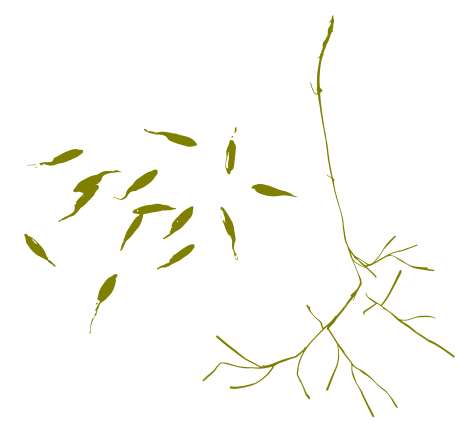
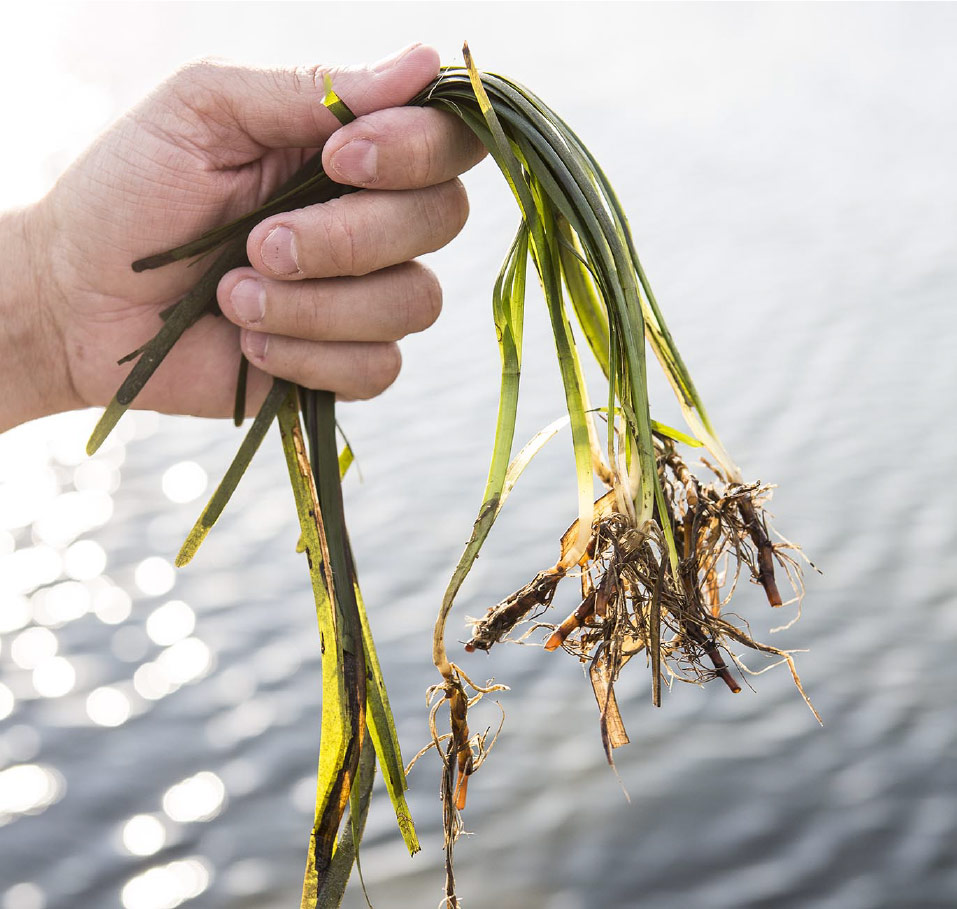
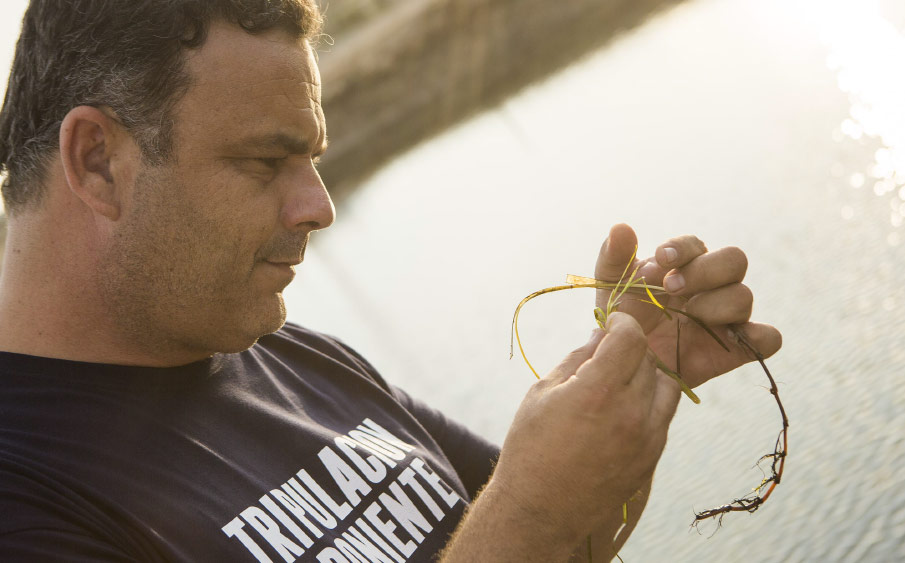
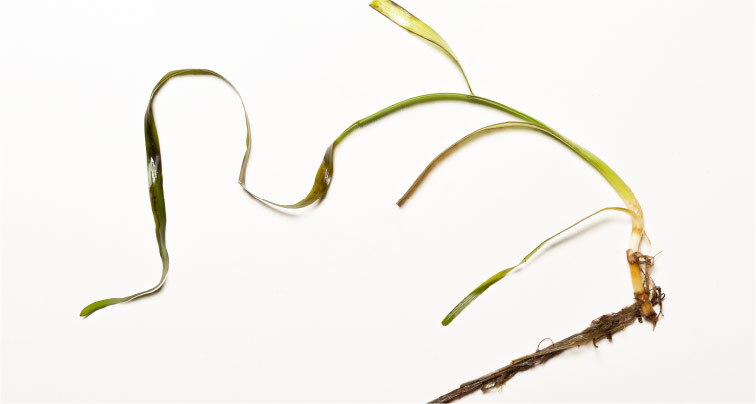
The marine grain we’ve focused on comes from a kind of aquatic seagrass called Zostera marina.
It is thought that all land-based plants began as marine plants. We believe this one is a form of seagrass that adapted to grow on land many years ago, reproducing through flowers and seeds, but ultimately returned to the sea, where it continued to evolve into its current submerged state. This select plant belongs to one of the few families that followed this trajectory.
One of four types of marine phanerogams in Europe, the plant currently flourishes in its natural state. We discovered it about three years ago on one of our frequent underwater expeditions during which we harvest different marine plants for research purposes.
For the first time ever, we at Aponiente have managed to grow this marine plant under controlled circumstances. In 2017, we began a groundbreaking study, which has revealed the plant’s feasibility for human consumption. What’s more, it might be considered a “superfood” given its unique nutritional qualities.
Pioneering project on a world scale.
At Aponiente’s research lab, we have achieved the cultivation of Zostera marina and its seed – marine grain. For the first time ever, controlled crops have been successfully grown. Never before has this goal been reached.
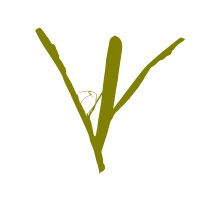
The project was launched in 2017 – the first of its kind in all the world. The undertaking allowed for the recovery of the native species, Zostera marina, helping to generate greater marine biodiversity, thus enriching our ecosystem and strengthening the region in the struggle against climate change.
Currently, the experimental cultivation area measures some 3000 m2, and is located in Bahía de Cádiz Natural Park, near the municipality of Puerto Real. Along the northern coast of Spain, and throughout Europe, there are naturally occurring marine meadows teeming with Zostera marina. The wild species is now protected, given that it plays a crucial role in the ecosystem, but it is still dying at an alarming rate in areas where it once grew in abundance. Human marine activities have had an adverse effect on the plant.
Despite their importance it is extremely challenging to carry out reforestation projects of this kind. The problem is that there are no nurseries that are prepared to supply the appropriate plants and/or seeds. One aspect of the present project that makes it so notable is that, for the first time, a seed bank will be created that will serve to repopulate coastal wetlands, which can then be restored and managed.
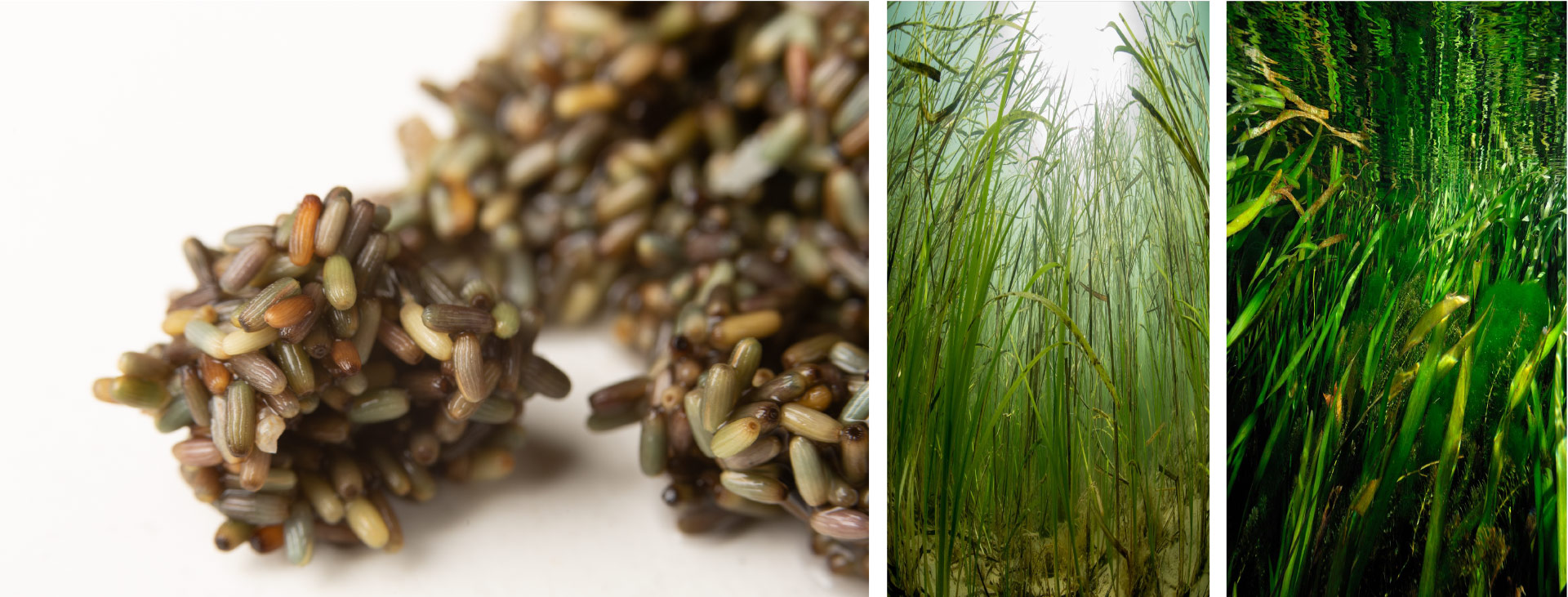
Cultivating the future.
After three years of hard work, we have proven the viability of the controlled cultivation of this plant, the creation of a seed bank, and the properties that are most beneficial for human consumption. Systems have been developed for planting, cultivating and harvesting the plant, all adapted to the marine environment.
We have challenged ourselves to create the world’s first and only specialized R&D center for the cultivation of marine vegetation. The goal is to continue researching this marine grain, as it may hold the key to mitigating the effects of climate change. We also aim to restore aquatic ecosystems, develop future marine crops that until now have been cultivated only on land, and work toward making the “ocean garden” a reality.
Three quarters of the planet’s land is bathed in salt water, whether along the coasts or deep in inland wells, making it impossible to drink the water there or grow crops. Our marine grain changes everything, paving the way toward a crop that can be grown in areas that are abundant in salt water.
To download a complete file with detailed information on the marine grain project, click on the following link..